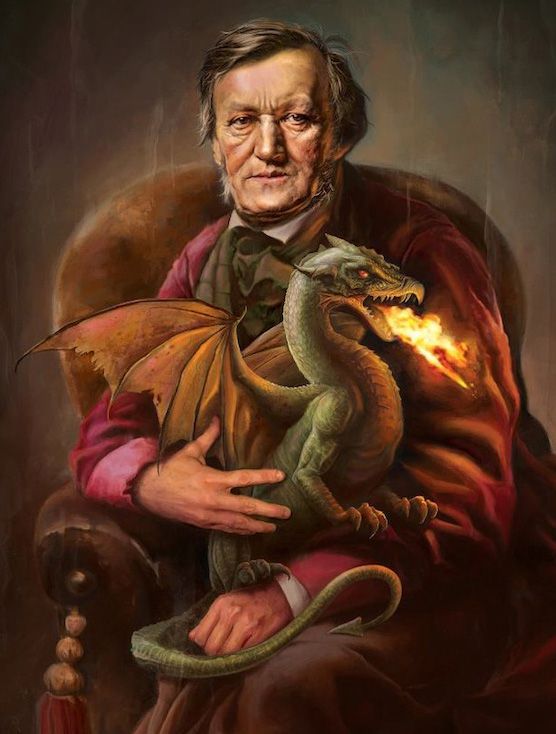Richard Wagner’s kingdom
Young musicians from Kyiv, Kharkiv, and Lviv Wagner societies visit this year’s famous opera festival in Bayreuth (Germany)
Ukrainian scholarship holders were lucky to see for themselves that Richard Wagner’s “musical kingdom” is flourishing, attracting the top singers, conductors, and directors from all corners of the world.
As a reminder, the idea of making the elite festival accessible to young artists belonged to the founder himself. The composer initiated the scholarship foundation Richard-Wagner-Stipendienstiftung, which became active in 1882. According to the founder’s concept, this mighty institution’s most important objective was to “open the path to art before young musicians, grant them free entrance to performances and, if necessary, refund travel and accommodation expenses.” Now, for almost two decades, this opportunity is available to young activists of three Ukrainian Wagner societies, alongside with representatives of other countries. For instance, 32 young artists of the Kyiv society, launched in November 1996, have received recommendations and visited Bayreuth. Among them are singers, pianists, violinists, composers, music historians, and theater critics.
This year’s Wagner Scholarship holders are two Kyiv-based artists: Iryna Bohdanova, a music historian and recent post-graduate student of the National Music Academy of Ukraine, and pianist Oleksandr Behma, who is now also a student of the acting department of the Karpenko-Kary National University of Theater, Film and Television. We have visited three performances. First was Siegfried, the third part of the operatic tetralogy The Ring of the Nibelung, conducted by Kyrylo Petrenko, who is now one of the leading opera conductors, general music-director of the prestigious Munich Opera Festival. The maestro found time to talk to us, scholarship holders. His opinion of the director’s proposed interpretation of the opera completely coincided with that of the audience: the outlandish production was saved by Wagner’s majestic music and the fantastic professionalism of the singers and orchestra. On the other hand, director Frank Castorf’s experiments, which became a conscious mockery of Wagner’s drama, sometimes sparked resentment in the public.
Lohengrin, produced by the renowned representative of the older generation of directors, Hans Neuenfels, also caused a controversial reaction. This performance has been on the festival program for years, and two years ago it was even broadcast on television. According to the experienced director’s complex philosophical concept, the noble Lohengrin (Klaus Vogt) arrives in a grotesque kingdom of rats. His presence helps gradually transform them into humans. At the same time, Elsa’s personal drama is in the focus: the singer Annette Dasch succeeded in rendering the abyss of doubt, anxiety, and anguish suffered by her heroine.
The production of Tristan and Isolde was perhaps the most correct interpretation of the author’s original concept. It was directed by Katharina Wagner, the great composer’s great-granddaughter and co-director of the festival. Nothing disturbed the unhurried, meditative flow of time, inherent in Wagner’s masterpiece. The phenomenally flexible and expressive orchestra conducted by Christian Thielemann did its best to implement the composer’s idea of the orchestra as the soul of an opera play. At the same time, the romantic drama of Tristan (Stephen Gould) and Isolde (Evelyn Herlitzius) unraveled in all its unbounded grandeur and purity.
Wagner’s works make up a staple in the repertoire of opera houses in various countries. However, it is an absolutely exceptional luck to hear Wagner at Festspielhaus, the unique theater designed by the composer himself. Only here can the audience fully comprehend the master’s creative designs. The theater’s ascetic timber building has survived almost unchanged since 1876. The auditorium is devoid of unnecessary decorations, ponderous boxes and galleries. The seats allow to see the stage from any corner of the house without hindrance. The theater’s stage rigging and equipment allow the stage directors to implement their most daring ideas. The ceiling, made of hard impregnated fabric, ensures perfect acoustics. Yet Wagner’s chief invention is the orchestra pit: the composer decided to completely hide the orchestra from the spectators, to create the “presence effect” on the stage and the impression of the instruments sounding as if from a “mystic abyss.”
By the way, all the scholarship holders who attended the Wagner festival in various years, agree in one thing: each street, each building in Bayreuth carries an imprint of the great composer’s spirit. No matter where you are, be it at Villa Wahnfried, Wagner’s last earthly abode, or the picturesque Hofgarten Park, or outside the ancient baroque Markgraf Opera House, you are part of the special world of music and art, where there is no yesterday, no past. This is where Richard Wagner reigns, a genius who perpetuated himself in music, word, and stone. And this is the feeling you will carry on with you.
Newspaper output №:
№46, (2015)Section
Time Out





